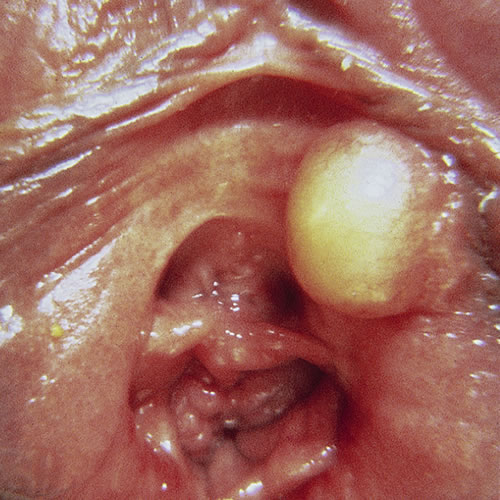Introduction
Vestibular mucous cysts1 are not uncommon. They are simple cysts within the vulvar vestibule and are composed of mucus-secreting epithelium.
Epidemiology
Unknown
Etiology
The exact origin of these cysts is disputed. They may be derived from urogenital sinus epithelium or from the obstruction of minor vestibular glands.
Symptoms and clinical features
These lesions are usually asymptomatic unless infected, when there is pain. Very large cysts can cause symptoms of obstruction. They are usually discovered on routine pelvic examination or by self-examination.
These cysts vary in size from 0.5 to 1.5 cm in diameter and are located around the introitus. They are mobile, non-tender, skin-colored, yellowish, or bluish/translucent with a smooth surface.

Rarely, they are large enough to partially block the urethral meatus.
Diagnosis
Diagnosis is clinical and histopathologic.
Pathology/Laboratory Findings
If biopsy or excision is done, the single layer lining with mucinous columnar epithelium with possible papillary infoldings and occasional cilia, will be seen on histopathology.2
Differential diagnosis
Differential diagnosis includes Bartholin’s duct cyst, Skene’s duct cyst, and epidermal cyst.
Treatment/management
For an asymptomatic cyst, no treatment but reassurance is necessary. Symptomatic cysts can be excised.